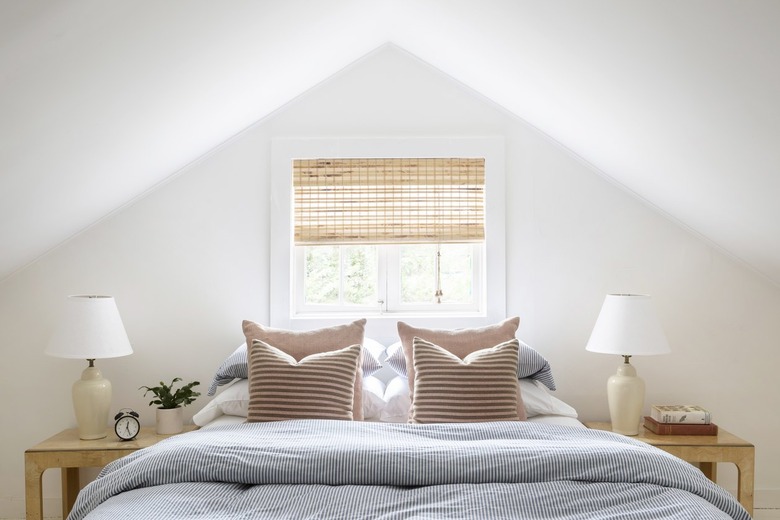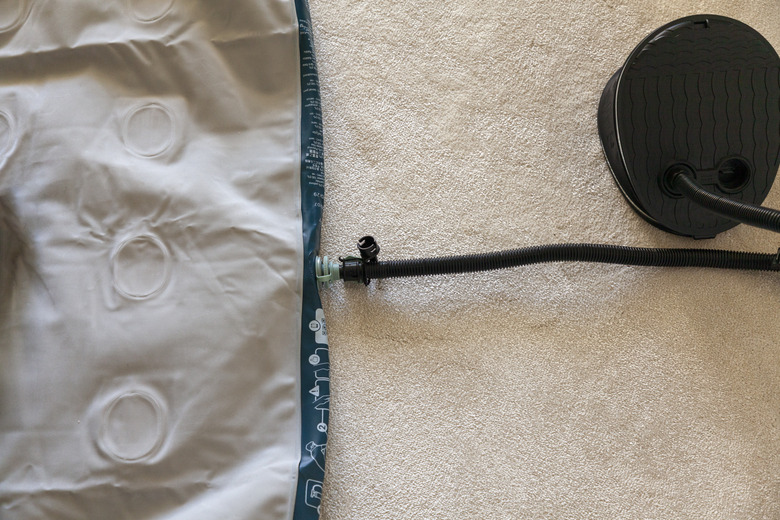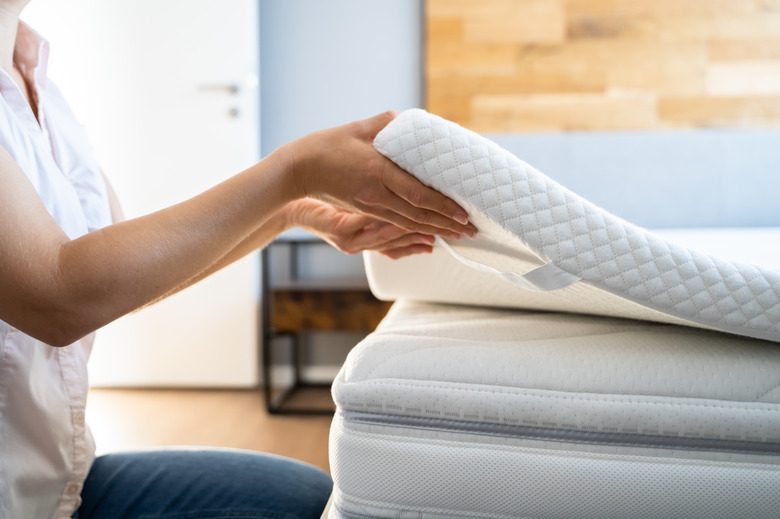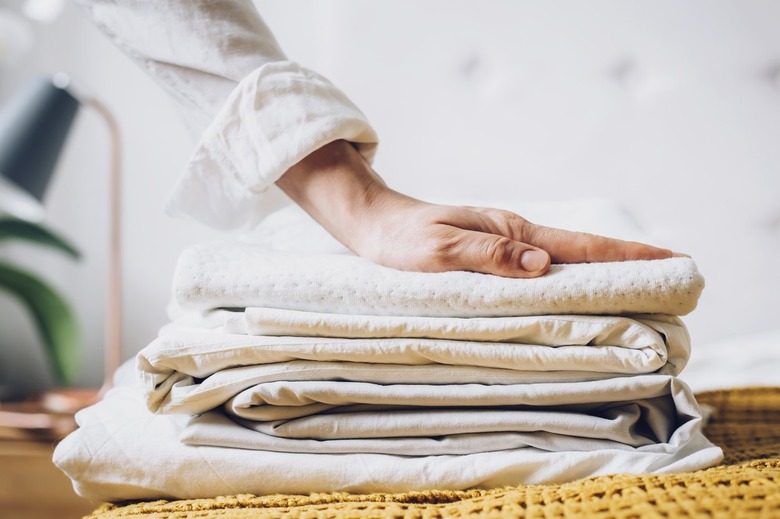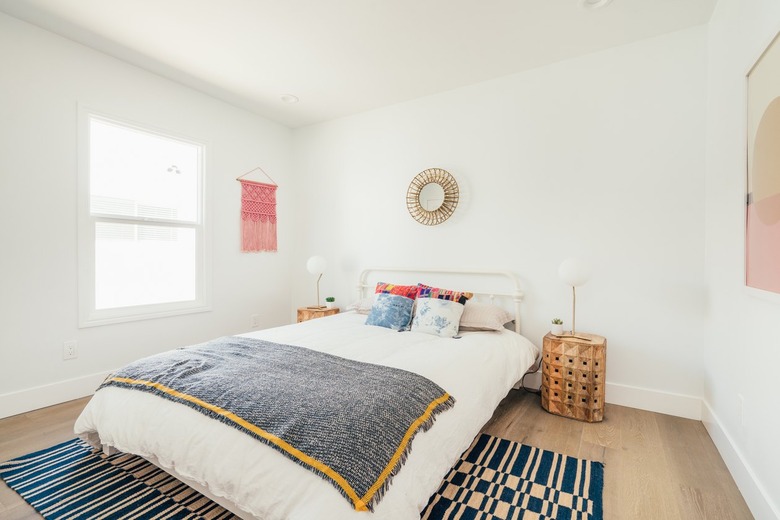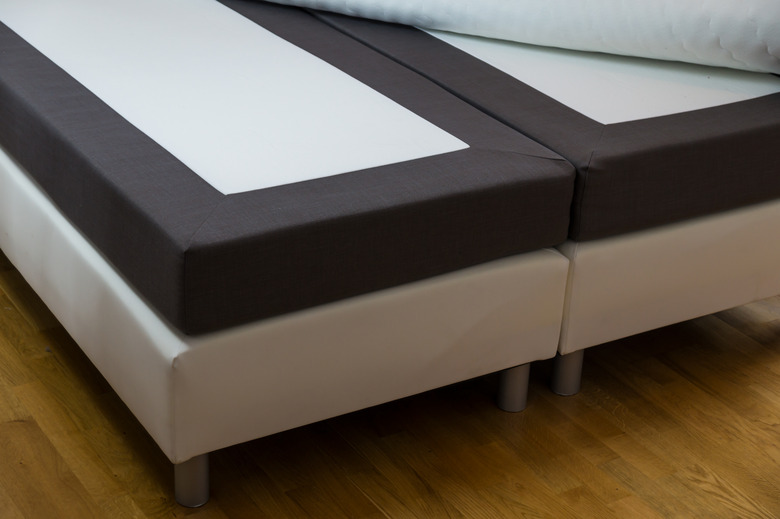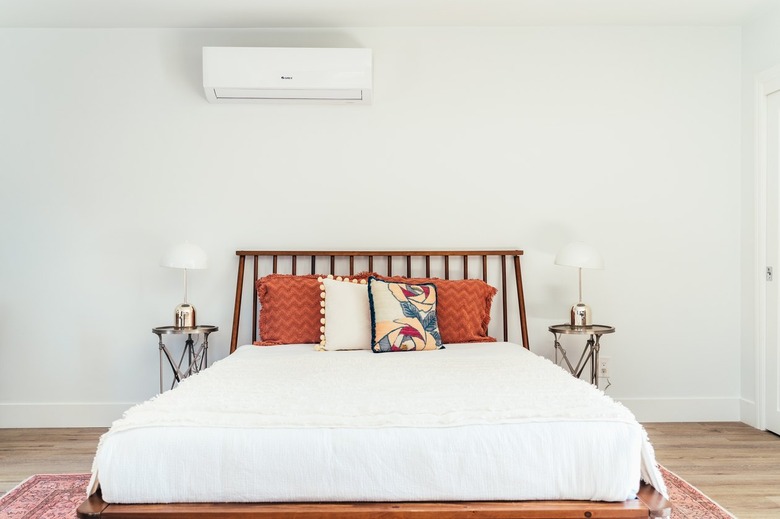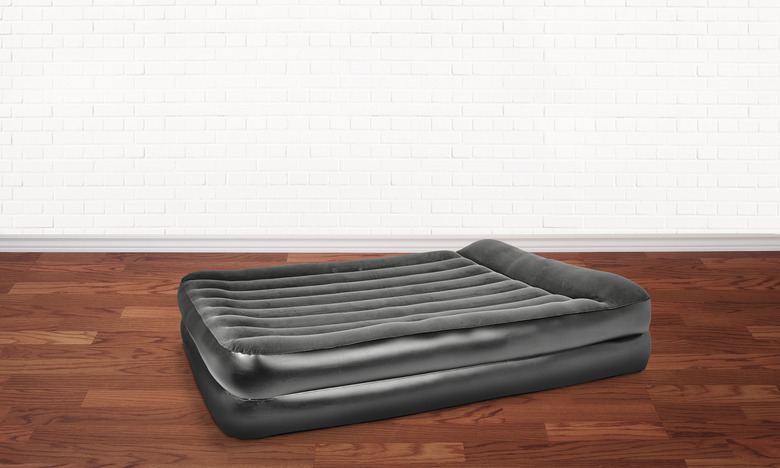How To Make An Air Mattress More Comfortable — 7 Expert-Approved Tips
We may receive a commission on purchases made from links.
As the holidays arrive, people start pulling their air mattresses out of storage to accommodate for overnight guests. But an air bed simply does not offer the same level of comfort as a real bed, which leaves many hosts wondering how to make an air mattress more comfortable so that their friends and relatives don't wake up with aches and pains in the morning. To give your guests a better night's sleep (and a comfy place to relax), make the mattress feel as much like a traditional bed as possible.
The expert-approved hacks below can help you learn how to make an air mattress more comfortable for your guests.
1. Properly Fill the Mattress
1. Properly Fill the Mattress
Alex Savy, a certified sleep science coach and CEO and founder of mattress review site SleepingOcean, warns, "If an air mattress is deflated and lacks enough air inside, it might not be able to support you." He says a sufficiently inflated air bed should feel firm and provide adequate support for your weight. Remember that lighter guests, particularly children, and side sleepers, may need a softer sleeping surface, and an overfilled air mattress may push excessively on your guest's pressure points.
To get the right level of support, inflate the air mattress to the user's comfort level, which should be primarily based on their size, weight, and sleeping position. Have your visitor test the bed to ensure it is supportive without being overinflated.
2. Add a Mattress Topper
2. Add a Mattress Topper
Since air mattresses lack a comfort layer to pad pressure points, they often cause body aches even if they provide enough back support. Adding a 1- to 2-inch-thick memory foam, pillowtop, feather, latex, or hybrid mattress pad can create a more comfortable sleeping experience. This softer surface can "further enhance the functionality of your air mattress," says sleep psychologist Dr. Katherine Hall. "This will help to provide a little extra cushioning and prevent pressure points from forming on your body."
When figuring out how to make an air mattress more comfortable for your guests, remember that air can get pretty cool at night, especially during outdoor camping trips. Even the most comfortable air mattress can still be chilly in the winter since an inflatable bed lacks the insulation of a traditional bed. Aside from adding a little padding, a mattress topper can also make the bed nice and comfy by providing a layer of insulation. Similarly, because PVC traps body heat, a breathable mattress topper can also create a more comfortable sleeping surface during the summer.
3. Use Real Bed Sheets
3. Use Real Bed Sheets
People tend to sleep best in beds that feel like what they're used to at home. While an air bed will never feel quite like the innerspring or memory foam mattress your guests are used to, using a fitted sheet and some blankets or a comforter will make your visitors feel welcome, much more so than a sleeping bag thrown on top of a bare air mattress. A fitted sheet can also help secure the mattress topper in place and "protect your air mattress from spills and stains," says Dr. Hall.
4. Set the Bed on Carpet
4. Set the Bed on Carpet
Use your air bed on the carpet or a rug rather than hard surfaces to insulate it from the bottom up. Dr. Hall says this can also "help absorb some of the movement and noise typically associated with an air mattress, making it feel much more comfortable and stable." A soft surface can also reduce the risk of punctures and tears that can cause leaks.
5. Use Box Springs
5. Use Box Springs
Alternatively, while not always practical, putting the air mattress on box springs, a bed frame, or a mattress stand can further insulate it. Savy says using a box spring will also make it easier for your guests to get up in the morning by bringing the mattress up to the same height as a traditional bed.
6. Use a Wall, Headboard, or Edged Air Mattress to Prevent Pillows From Slipping
6. Use a Wall, Headboard, or Edged Air Mattress to Prevent Pillows From Slipping
While some air mattresses have raised edges to help stop pillows from sliding off the top of the bed, many models have curved sides that make it challenging to keep your pillow in place. Savy suggests using a headboard or pushing the air mattress against the wall whenever possible to prevent runaway pillows. Aside from stopping pillows from moving around, guests usually prefer having their bed against a hard surface because it gives them a comfortable place to lean against if they sit up in bed.
7. Replace Your Old Air Mattress
7. Replace Your Old Air Mattress
When it comes to how to make an air mattress more comfortable, it can help to buy the right bed from the start or replace your old one. Here are some tips for finding an air bed that can give your guests a good night's sleep:
- Look for a built-in pump: Some air
mattresses require a separate pump to inflate, but a built-in pump makes
inflating and deflating much faster and easier. Additionally, this ensures you'll
never end up frantically trying to look for a misplaced pump when you're ready
to set up the mattress. A built-in pump can also prevent air from escaping when
you remove the pump. - Find a model with two pumps: Because all
air mattresses lose some air over time, consider buying an inflatable bed with a second pump that will quietly reinflate the mattress as needed
throughout the night. - Choose an adjustable model: Not all
guests have the same firmness needs. Since you'll probably use your mattress
for different visitors, having a model with adjustable fill settings will take some guesswork out of inflating the bed. Dr. Hall says
that being able to "fine-tune
the support of your sleep surface" can help increase your guest's comfort
levels and promote better overall sleep quality. - Pick a durable mattress: Most air beds
are made from PVC, though some are made from rubber or fabric-reinforced
plastic. Atlanta-based orthopedic surgeon Dr. Kellie K. Middleton says shoppers should look for sturdy PVC mattresses over 0.4 mm thick or those with a sturdy fabric cover "to ensure it can withstand repeated
use and won't easily wear out over time." - Look for a flocked model: Many air
mattresses have velvet or velour flocking, which minimizes slippage of pillows
and sheets. These materials can also help insulate the bed and make it more
difficult to puncture. - Shop for a raised air mattress: Low-profile
air beds are between 4 and 9 inches thick. While these provide a sufficient
support layer, a raised mattress (meaning it is over 10 inches tall) can make
it easier for guests to get in and out of bed if you can't set the bed on a bed
frame, box spring, or other raised surface. If you do purchase a raised air
bed, be sure to buy appropriate deep-pocket sheets so your fitted sheets don't slip off too easily.
